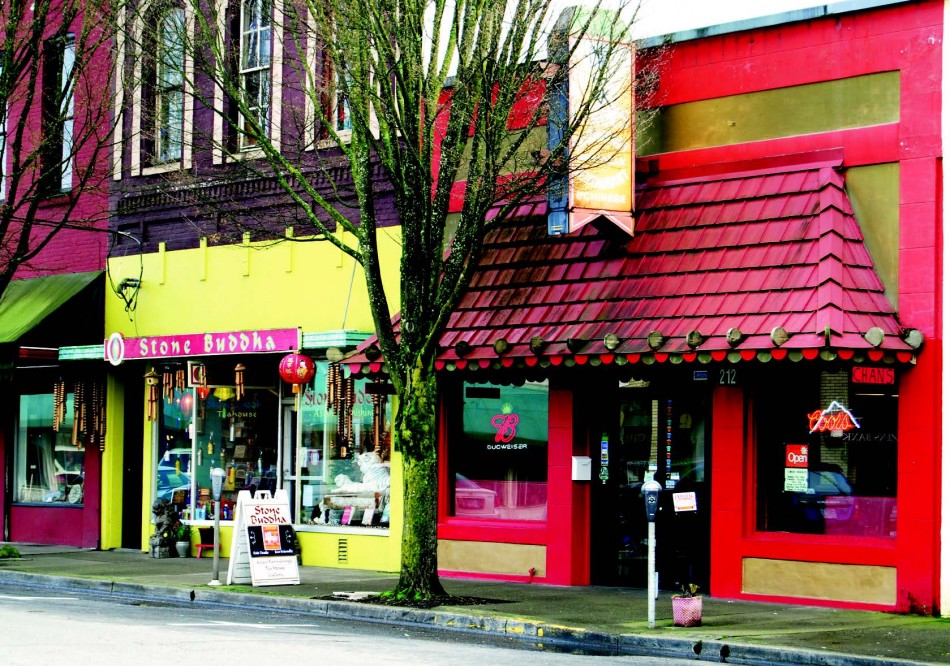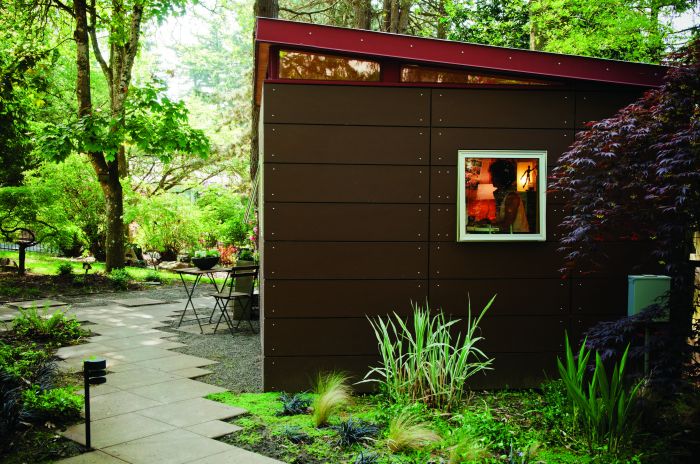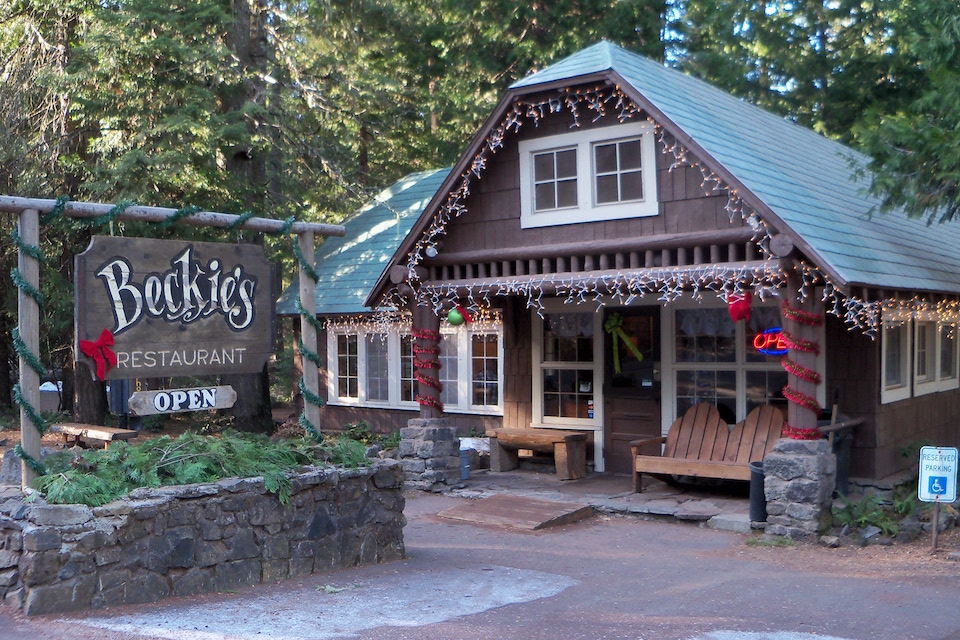written by Kevin Giffin
Silverton rolls out of the Cascades to the west and over valley soils that support sheep farms, tree nurseries, a handful of vineyards and other agriculture. Fifteen miles west lies the state capitol, Salem, and forty-five miles north is Portland. Silverton takes after neither. Depending on where you look, Silverton is a sliver of artistic Ashland, a dash of Dundee wine country and dose of Eugene oddity.
Info:
Population: 9,540
Median household income: $38,429.
Average home sale: $152,800.
Major employers: Silver Falls School District, Silverton Hospital, manufactured home builder Champion Homes, meat processor Brucepac and Mallorie’s Dairy
What To Do:
Visit the Oregon Garden’s resort and spa. (oregongarden.com)
Take a camera to capture the wildflowers, the birds and the waterfalls while hiking Ten Falls Trail at Silver Falls State Park
Get a murals map and tour Silverton
Try the tasty Rolling Hills Bakery
Tour the up and coming Silverton wineries
Browse the Lunaria Gallery for eclectic art
Hit the Saturday morning farmers market in Town Square Park
Take in the local brews at Mac’s Place, or at Seven Brides Brewery
“There are a lot of strange cats around town, but it makes Silverton Silverton,” says Anna Day, a third-generation Silvertonian who owns Le Pooch, a dog grooming business.
Known as Oregon’s Garden City, Silverton is home to the Oregon Garden, an idyllic setting with twenty gardens, a resort hotel and spa. Its downtown is a nicely preserved version of Main Street, America. Early century brick Colonial stores line Water and Main Streets, where there are Thai, Chinese, and Mexican restaurants and the Lunaria Gallery.
Lunaria began in a small storefront in 1996, and is an artists’ co-op whose twenty-six members each work fourteen days a year and pay $40 month for rent. Lunaria’s “First Fridays” wine and art events have played a crucial role in the local arts community. “This seems to be a little artist haven,” says Emily Start, 62, a founder of Lunaria and a fourth-generation Silvertonian.
Over the past decade, winemakers and artists came for the area’s beauty and its bounty, nudging the population 28 percent to almost 10,000.
The art community of Silverton tells the town’s history in fourteen striking murals. Mural painting began in the mid 1990s, when David McDonald, a local artist, painted enormous versions of Norman Rockwell’s “Four Freedoms” on the side of a downtown building. Another mural depicts the story of Bobbie the Dog, whose owners took him on a family trip in 1923 to Indiana, where he went missing. Six months later, Bobbie hobbled back into town 3,000-miles worse for the wear from his heroic solo journey.
As a young woman who has traveled more and more comfortably than Bobbie the Dog, Day, 27, wouldn’t want to live anywhere else. Silverton’s a town where she can open the monthly tabloid, and still identify most of the faces. It’s far enough from I-5 to be quiet—even remote—yet still only a short distance drive to a big-city fix.
“When there are big growth things happening here, people freak out,” Day laughs. “I’m a traditionalist. I don’t want expensive boutiques and Starbucks here. I want to be able to afford my home town.”
Silverton’s recent fifteen minutes of fame came in a February 2009 People magazine profile on Stu Rasmussen, the nation’s first transgender mayor. It’s still Mayberry, but Aunt Bee has an Adam’s apple.









